|
Old Year, New Year
For medical,
rather than legal, reasons I was unable to attend the Publishers’ Publicity
Circle Christmas party, one of the most invigorating social occasions of the
year, though somewhat dangerous for a man of my great age and infirmity.
Consequently, the last event on my 2012 social calendar turned out to be the
splendid launch party given by Ruth Dudley Edwards for her new novel Killing
the Emperors, held in the Cartoon Museum only a hop and a skip from my London
office, The British Museum (technically, The Museum Tavern opposite the British
Museum).

It was a truly
splendid occasion, which allowed me to meet up with numerous old chums and
chumettes including Deryn ‘The Hat’ Lake (pictured with Ruth and myself) who
also, it turns out, has just published a new novel.
Best known for
her Georgian mysteries featuring the apothecary detective John Rawlings, Deryn
has recently launched a new series featuring the Rev. Nick Lawrence, vicar of
the sleepy Sussex village of Lakehurst. In Dead On Cue [Severn House] the Rev.
Nick has to bring peace, if not goodwill, to the battlefield that is amateur
dramatics when a (very) minor Hollywood star moves into the area and takes over
the staging of a son et lumière at nearby Fulke Castle.
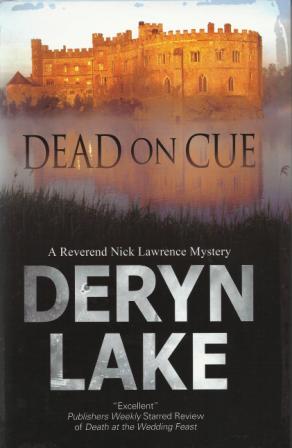
For some strange
reason, the local worthies of rural Sussex seem to take exception when a
hip-hop street dance is introduced into the traditional Elizabethan Fair scene
and, not surprisingly, a suspicious death follows.
It was also great
fun, as it always is, to meet up with Denise ‘DeeDee’ Danks, making an
all-too-rare appearance on the social scene.

I am
contractually obliged to remind students of British crime fiction that Denise’s
first three trail-blazing Georgina Powers thrillers – The Pizza House Crash,
Better Off Dead and Frame Grabber (which was very controversial in its day) –
have been splendidly reissued by the Ostara Crime imprint (www.ostarapublishing.co.uk).
So, Mr McClory, We Meet At Last
My distinguished
friend Len Deighton also has a new book out, his first ‘Kindle Single’ I
believe, but it is not a novel, rather a memoir with the intriguing title James
Bond: My Long and Eventful Search for his Father although it does, as one would
expect from Len, read like a thriller. Yet this is not a thriller about the
machinations and betrayals of spies and Cold War politics. No, this is far more
serious, far more devious, far more deadly. It’s about the movie business.

Whilst no one
questions the fact that Ian Fleming was the creator of the James Bond books,
starting with Casino Royale in 1953, the exact parentage of James Bond’s film
persona has long been a matter of confusion, speculation, legal minefields and
bitterness. That Fleming’s fictional secret agent would become a major figure
in the movies was never really in doubt, though not even the wildest Hollywood optimist
(and optimists don’t come any wilder than in Hollywood) could have predicted
the juggernaut that is the global Bond franchise now entering its sixth decade.
Ian Fleming
himself was keen – at times seemingly desperate – to see Bond on the big
screen. There had been a television Bond in America (Barry Nelson in 1954), a
radio Bond in South Africa (Bob Holness) in 1956 and a newspaper strip cartoon,
but a movie deal seemed elusive until, in 1959, Fleming was introduced to
fledgling film producer Kevin McClory, an egotistical Irishman with oodles of
charm, the conviction that he had invented the film Bond and, as it turned out,
a lifetime fondness for litigation.
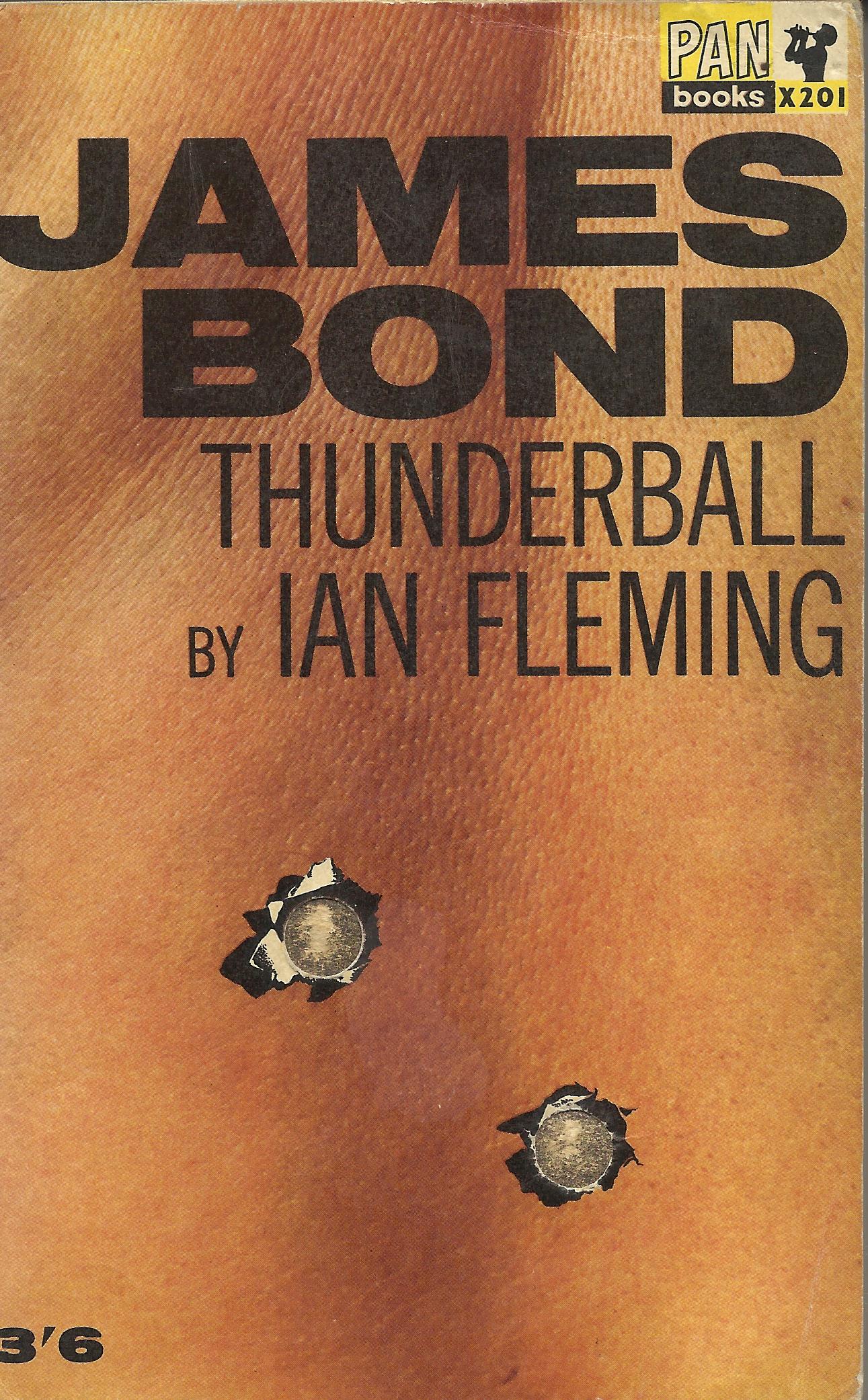
As a callow youth,
I devoured my 1964 paperback edition of Thunderball (with its iconic cover design by Raymond Hawkey) without
paying too much attention to the rider printed opposite the title page which
said: The story is based on a Screen Treatment by K. McClory, J. Whittingham,
and the author. Behind that perfunctory legal addendum is a saga of betrayal,
courtroom drama and big business which was to run virtually up until McClory’s
death in 2006.
In October 2012,
a year which saw the outstanding success of Skyfall and H.M. Queen appearing as
a Bond girl during the opening of the London Olympics, Radio 5 ran an internet
poll for the best-ever Bond (film) villain. All the usual suspects –
Goldfinger, Blofeld, Dr No, Scaramanga, Rosa Kleb etc. – received a fair number
of votes, but one wag nominated ‘Kevin McClory’.
Was McClory a
super-villain and Ian Fleming’s nemesis, or (as he would have claimed) was he
the mastermind behind and ‘father’ of the screen personification of James Bond?
Len Deighton knew McClory well, even worked on an un-filmed Bond script with
him (and Sean Connery). Come to that, he knew Ian Fleming and Harry Salzman,
for whom he wrote an early draft screenplay of From Russia With Love, and so is
ideally placed to suggest some possible answers.
For anyone with
an interest in or fascination for the magical world of movie-making, this is
required reading. In fact, the story of Kevin McClory’s ‘creation’ (or
‘take-over’?) of the cinematic James Bond would in itself make a very good
movie. But who on Earth could convincingly play the outrageous,
larger-than-life character of McClory? Casting a Blofeld or a Goldfinger seems dead
easy in comparison.
New Books on the Block
I always happy to hear of new publishing enterprises and imprints, especially when they come, like the popular alcoholic chocolates, with a Famous Name attached, such as ‘Hammer’- as in the legendary horror film producers.
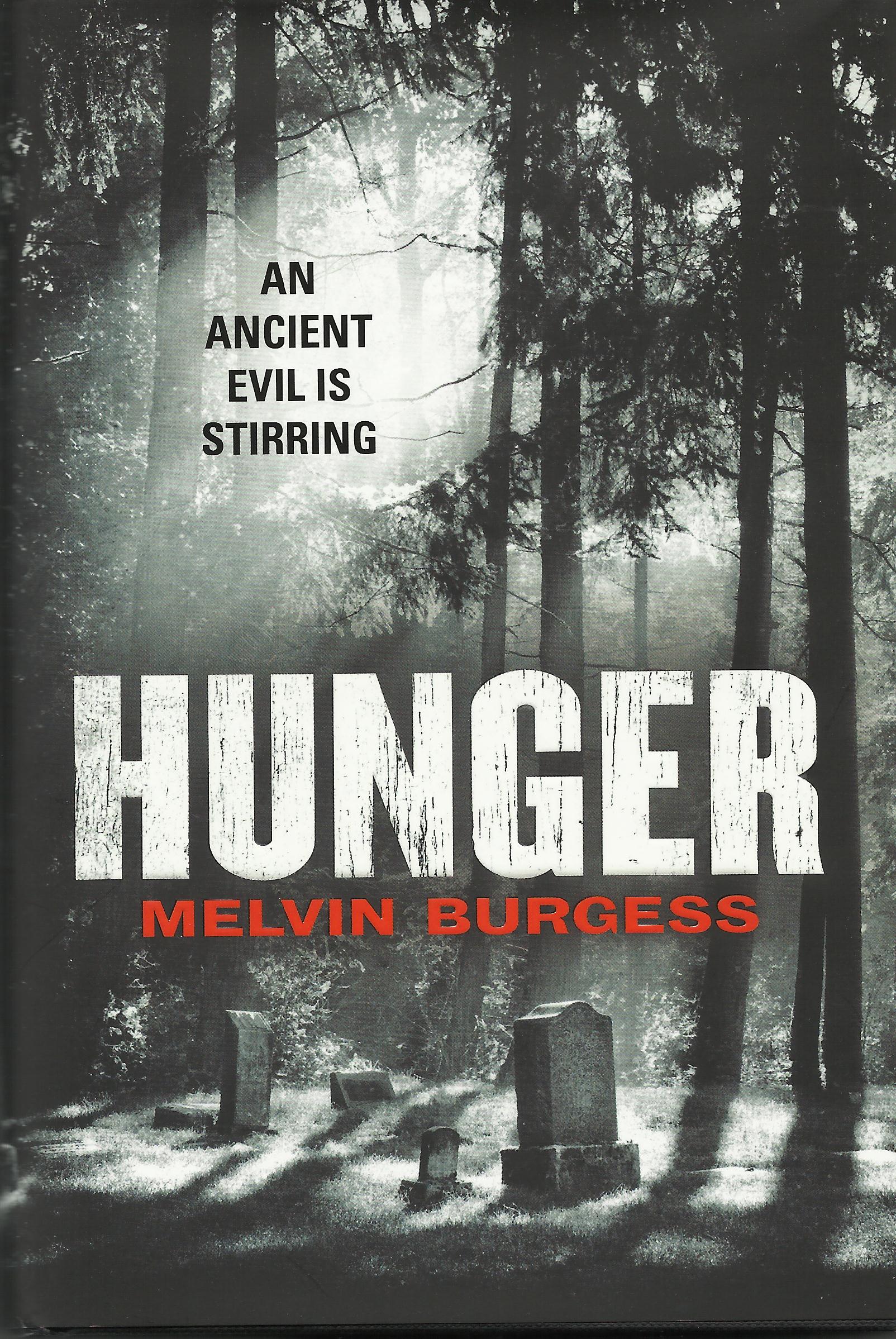
The first book I have seen under the Hammer imprint (actually published by Arrow) is described as “a terrifying new Hammer Horror novella” even though it clocks in at 291 pages, and is Hunger by that well-known author of Young Adult fiction, Melvyn Burgess.
Salt Publishing, a new name in crime fiction, based in that splendiferous Norfolk seaside resort of Cromer (or ‘Eastrepps’ as fans of Francis Beeding may know it), has launched with the paperback In the Family by Christina James, whom I believe lives near Boston in Lincolnshire, where the novel is set.
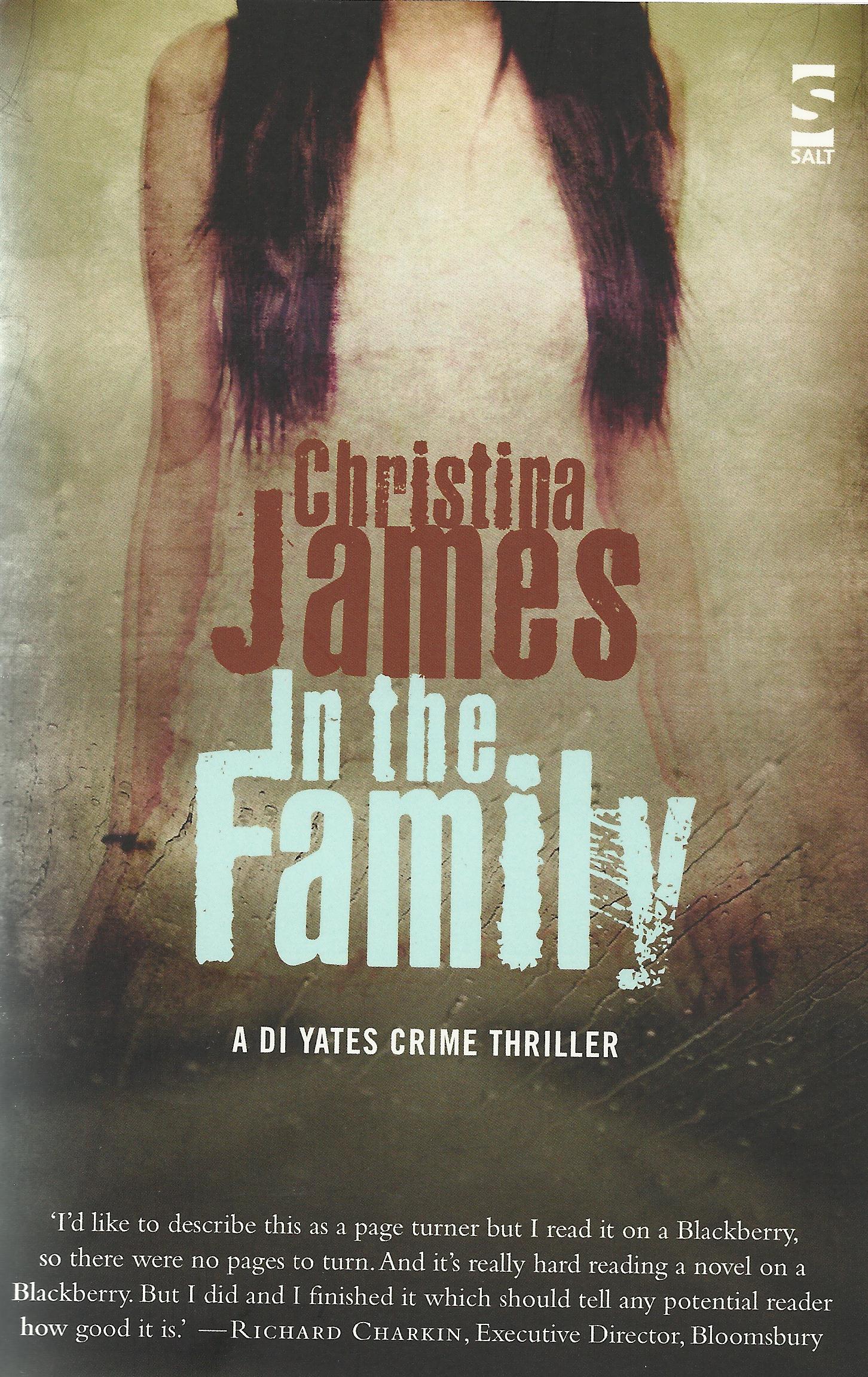
A former bookseller, researcher and writer of non-fiction, this Christina James should not be confused with the Christina James who lives in Boston, Massachusetts, which I believe to be in America, who is the author of Spank Me, which I do not think is a crime novel. (If it is, I am sure I will be suitably punished.)

Christmas Cheer (if not Cheers)
The double-dip recession seems to have finally caught up with the publishing industry. Normally at this time of year my loyal postman Nigel (whom I inherited from Baroness Ruth Rendell’s estate in Suffolk) struggles valiantly up the main drive to Ripster Hall, heavily laden with sides of smoked salmon, cases of claret, small casks of port, and gift boxes packed with the exquisite biscotti and Vin Santo produced by the Fattoria La Vialla in Tuscany.
Sadly, no such largesse was in evidence this year. In fact I did not receive a single Christmas card from a British publisher unless this object is one and I just failed to recognise it as such.

Made of plastic, about the size of a credit card and with a shiny electronic pop-out window, I really do not know what to make of this object, which arrived in a plain brown envelope without any indication as to who it was from. Indeed, the only identifying mark is on the reverse, on which is printed #shininggirls, which of course may the name of the latest chart-topping girl band or, just as likely, a Marxist guerrilla group from Latin America. I am honestly confused. If it is some form of recorded music then I fail to see how it would play on my gramophone or even at which speed – 45 or 78 rpm?
My disappointment with a crime fiction publishing industry that would leave me so hungry and thirsty over the festive season was mitigated only by the fact that they did provide me with some excellent reading material to while away the long dark nights.
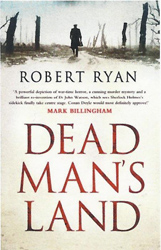
I have never been fond of the “continuing adventures” of Sherlock Holmes – stories written by modern admirers of Conan Doyle usually purporting to be ‘lost manuscripts’ of Dr Watson suddenly discovered in a bank vault. I do make two notable exceptions, however: the late Michael Dibdin’s outrageously cheeky The Last Sherlock Holmes Story and the Inspector Lestrade comic novels by M.J. Trow and admit I am on saloon-bar terms with several distinguished Sherlockians whose knowledge of the Doyle ‘canon’ is absolutely breath-taking.
When I discovered that Robert Ryan’s new novel was to feature Dr Watson as his hero, I was, I admit, initially suspicious but when I learned that it was a Dr Watson who was now serving as a Major in the Royal Army Medical Corps in Flanders on the Western Front at the height of the First World War, I was intrigued. By Chapter 2 I was hooked and finished Dead Man’s Land [Simon & Schuster] at a single sitting.
That Robert Ryan can write a gripping historical thriller should come as no surprise to anyone who has followed his career in recent years and the level of his research into both the period and the Holmes/Watson folklore is impressive and exhaustive. Yet that research never overwhelms, for Ryan weaves it seamlessly into a plot which encompasses Watson’s hunt for a sadistic murderer with a hit list (operating in the midst of mass, government sanctioned, murder), a German master sniper’s audacious attempt to kill a high ranking (and very familiar) British officer, the role of women nurses during the war and the class system and Victorian factory system which influenced the recruitment of the famous British ‘Pals’ regiments.
As an added bonus, there is even a cameo (albeit mostly off-stage) for a retired, bee-keeping Sherlock Holmes now living near the Sussex coast, within ear-shot of cannon fire from the Western Front and well within the range of marauding Zeppelins. What more could you want?
*
In February, Faber publish The Red Moth, a historical thriller by ‘Sam Eastland’ who is in reality Paul Watkins, the author of many fine historical novels over the past 25 years. Under the Eastland name, he has concentrated on the adventures of Inspector Pekkala, a fascinating fictional hero who served Tsar Nicholas II as his personal investigator (with the unofficial title ‘The Emerald Eye’), spent years in a Siberian Gulag, and by the 1930s finds himself reinstated as a personal investigator for a new Tsar – Josef Stalin.
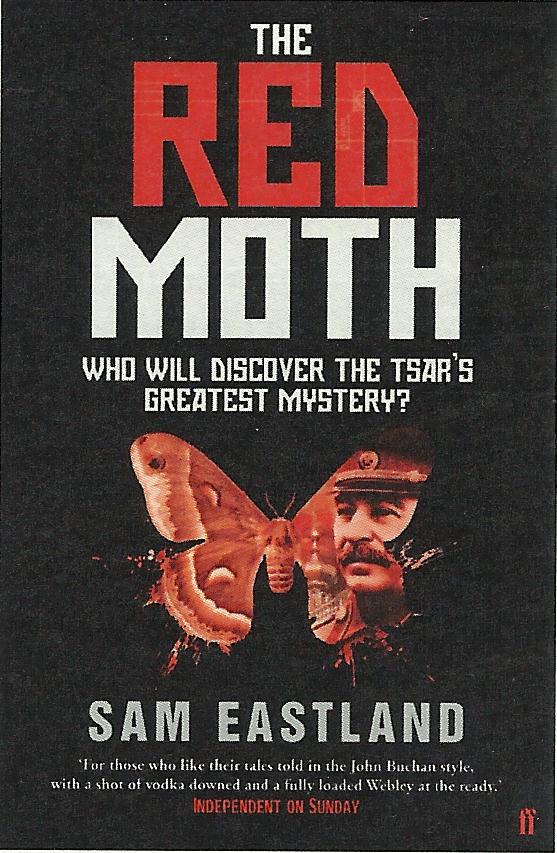
The Red Moth is set in the summer of 1941 and Hitler’s Wehrmacht is advancing rapidly into Russia, approaching Leningrad and the former Romanov palace of Tsarskoye Selo, which contains (or does it?) the fabled ‘Amber Room’ – a massive and massively valuable piece of artistic, and Russian, history; a real national treasure.
On the front line, a captured German scout plane contains evidence that the Nazis are planning possibly the biggest art theft in history. Who better than Pekkala, who lived in the palace grounds as a young man, to investigate and prevent the theft? The only problem is that by the time he gets there, Tsarskoye Selo is behind enemy lines.
This is the fourth Pekkala book and possibly the best yet, the plot unfolding at a cracking pace and the attention to military detail immaculate – though this will not come as a surprise to anyone who has read Paul Watkins’ debut novel Night Over Day Over Night. It also ends on a cliff-hanger, leaving the reader wondering (and worrying) if there will be a fifth in this enthralling series.
|
|
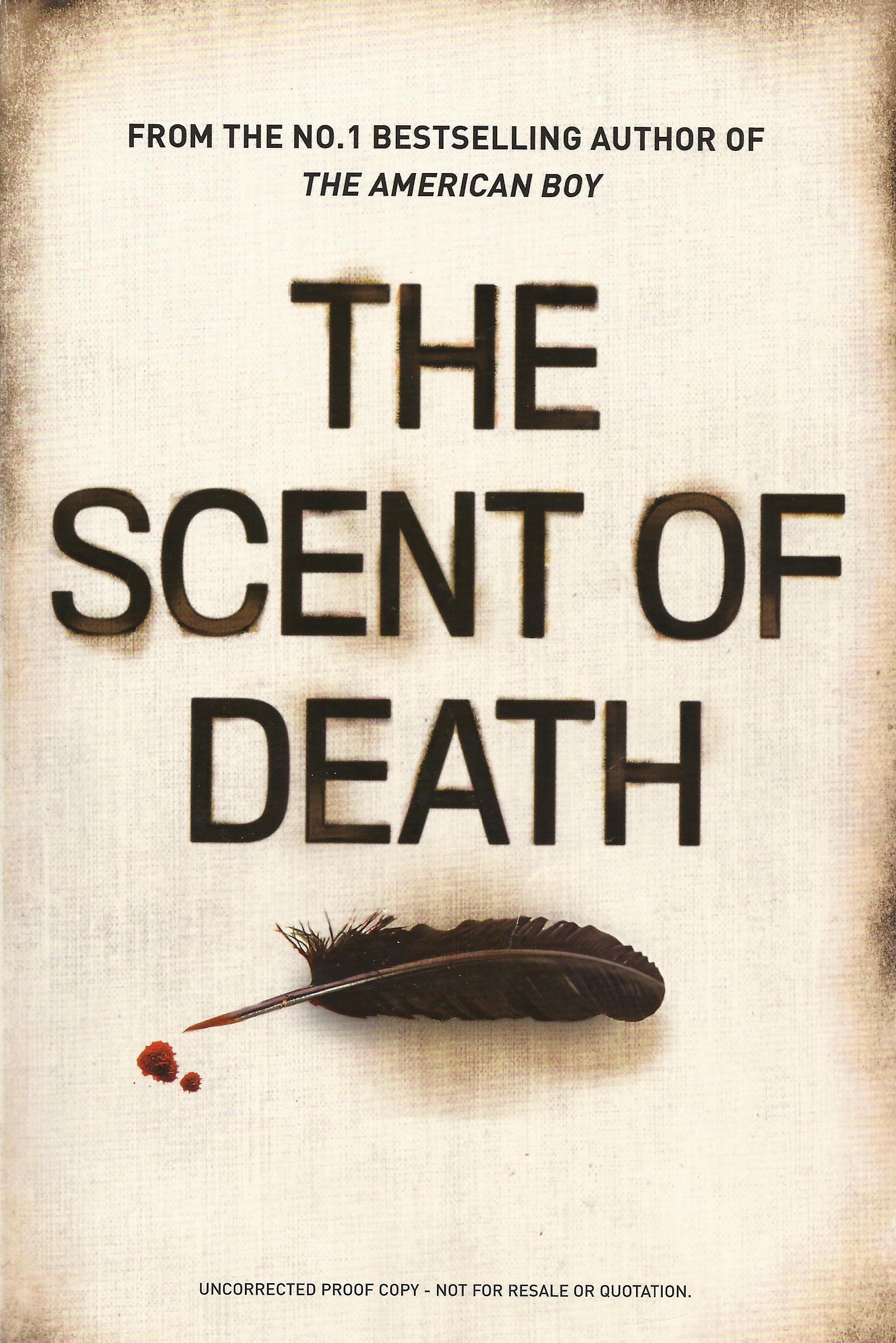
For his new
novel, Andrew Taylor also chooses a historical wartime setting, though the pace
of both the war and the story-telling are more sedate. No less fascinating,
however, as The Scent of Death
(from Harper Collins in February) is set in New York in 1778, when the
city remained a beleaguered outpost of British rule during the American War of
Independence and, unsurprisingly, a hotbed of intrigue, profiteering,
corruption and murder.
Finely written
with a cast of superbly drawn characters, The Scent of Death is an atmospheric
mystery which uses a setting rarely (if ever) explored by British crime
writers, who don’t usually like to be on the losing side especially not where
rebellious subjects are involved!
I am sure I do not need to remind my readers of some of the disgraceful events
which took place in Gotham City during that period (some of my readers may
actually remember them) including the destruction of a fine equestrian statue
of George III to be melted down for its lead content, reputedly to make 42,000
musket balls for the revolting colonists.
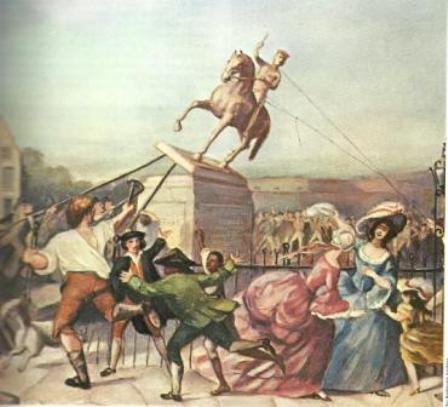
Andrew Taylor’s
fine novel does not dwell on such bad behaviour, but I would be quite
interested to hear what American readers think of the setting. I have no doubt
that Andrew’s legion of fans here will love it and though I should be old
enough to know better than to make predictions, I would hazard a guess that The
Scent of Death will feature on the short-list for this year’s Ellis
Peters’ Award (or ‘Historical Dagger’) if anyone can discover when it is to be
awarded. Do not be surprised to see Robert Ryan and Sam Eastland also in the
lists, along with R.N. (Roger) Morris.
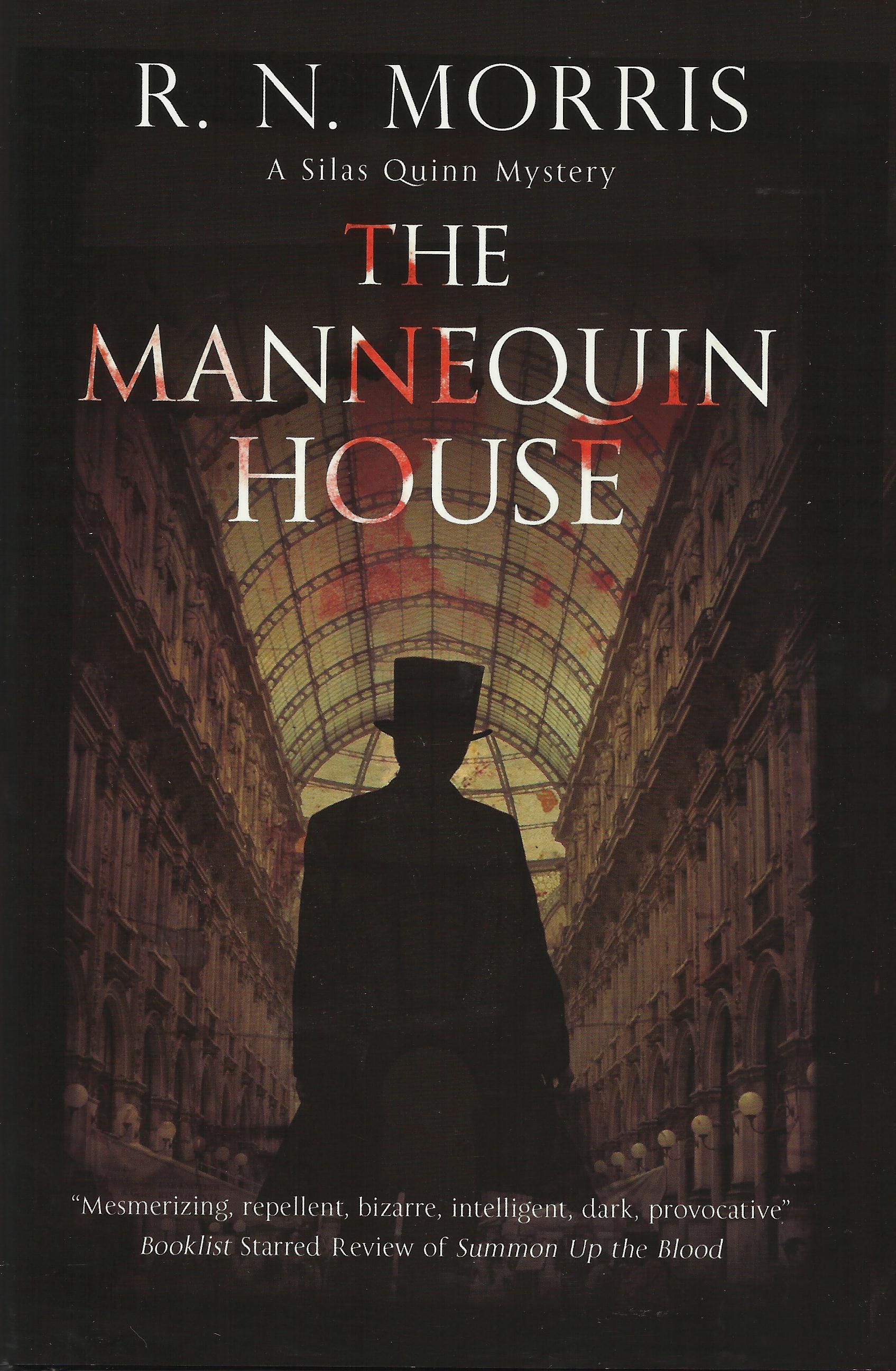
Roger Morris has
been shortlisted for the Ellis Peters Award in the past, for his highly
regarded ‘Porfiry’ novels set in 19th century Russia. With his
second Inspector Silas Quinn novel The Mannequin House, just out from
Crème de la Crime, he has moved through time and space to London in April 1914
to investigate the death of a fashion model in an upmarket West End department
store.
Roger’s Inspector
Quinn may not yet have as many faithful fans as his Inspector Porfiry, but I,
like Quinn’s fictional boss, am impressed with his shoot-first-arrest-later
attitude which makes him a sort of Edwardian Dirty Harry.
*
Coming up to date
and forsaking war zones for the haunted forests of Normandy, I have been
pleasantly impressed with The Ghost Riders of Ordebec by
French archaeologist-turned-crime-writer Fred Vargas, which is to be published
by Harvill Secker in March.
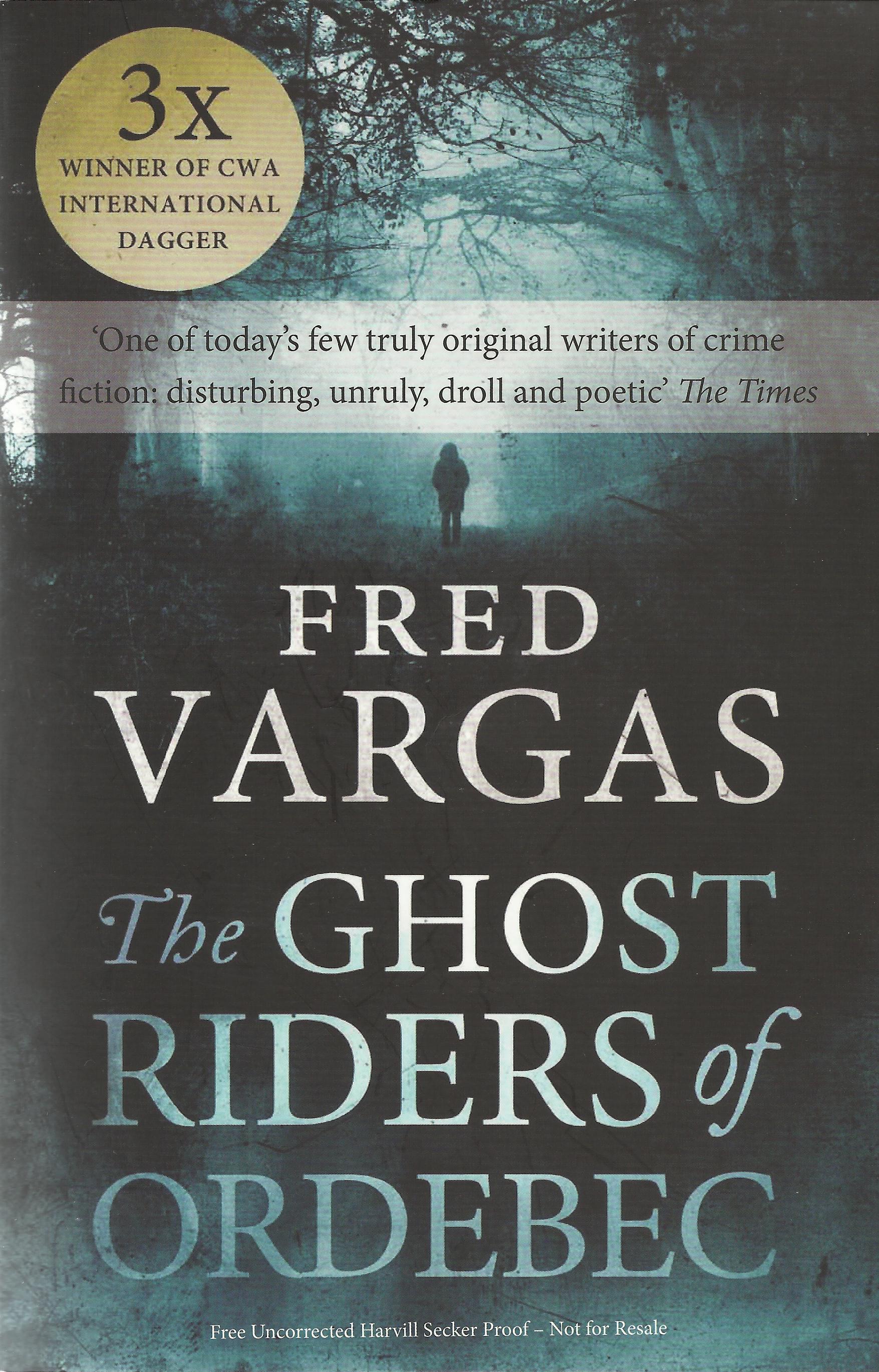
Fred Vargas’
enigmatic Commissaire Adamsberg is a senior police detective in the Maigret
mould in as much as he seems to have plenty of time on his hands, despite
tracking a notorious arsonist, to worry about cruelty to Paris’ pigeon
population and to be able to hop on a train to darkest Normandy at a moment’s
notice having heard a sort-of ghost story told by a woman who casually calls in
at his office (a starting point for many a Maigret story). It seems a world
away from the drug-taking, sex-starved, frenetically streetwise Parisian cops
from the TV show Spiral.
Vargas is a
persistent winner of the CWA’s International Dagger (for crime fiction in
translation) and her novels have been described as “deliciously quirky”, which
they certainly are. When a reviewer in The
Observer trumpeted that “Vargas’ imaginative characters put most of
America’s top-rated crime writers to shame” he was, however, going a tad over
the top.
*
If your taste is
for foreign, but not Scandinavian, detectives then look no further than the new
Makana mystery, Dogstar Rising by Parker Bilal which appears in February from
Bloomsbury.
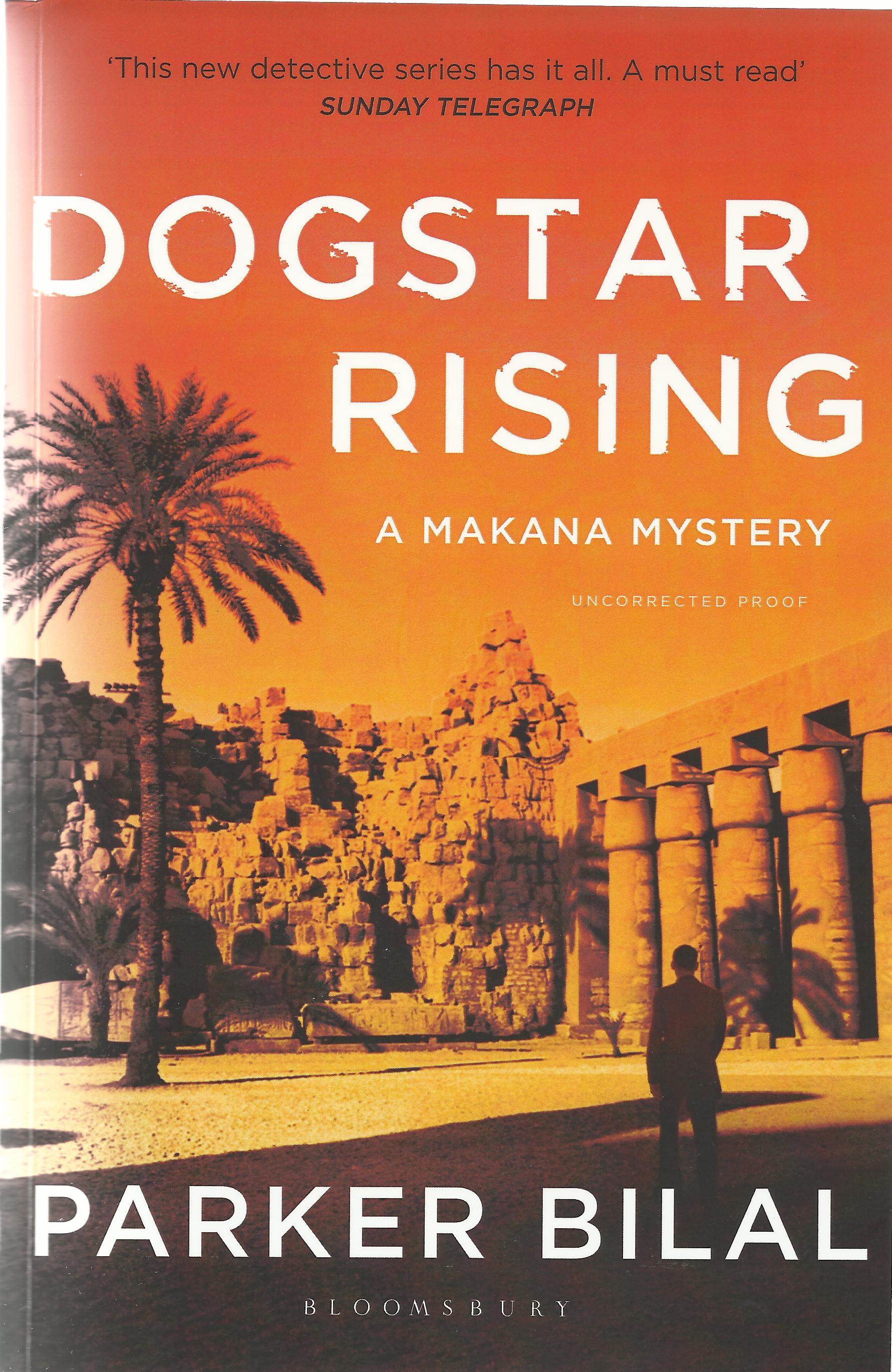
Parker Bilal is
the pen-name for mysteries used by novelist Jamal Mahjoub, who is of
British-Sudanese origin and writes in English. His protagonist, Makana, is a
Sudanese refugee currently scratching out a living in Egypt as a private eye
whilst living (shades of Travis McGee) on a houseboat on the Nile. In Dogstar
Rising he undertakes the investigation of a series of threats made to
Blue Ibis Tours, a ramshackle travel agency which organises trips for foreign
tourists to the sites of Ancient Egypt. Are the threats being made by hard-line
religious groups and motivated by the unsolved murders of young homeless boys
in the parts of Cairo tourists rarely see?
This is a
thoughtful, edgy, intelligent thriller with an unusual (for Western readers)
setting – Egypt in the summer of 2001.
The Spying Game
I have already
raved about Dan Fesperman’s The Double Game (published by
Corvus), which is nothing short of a love poem to the spy story and which cites
dozens of real spy novels and even
supplies a bibliography covering spy fiction from 1821 to 2007!
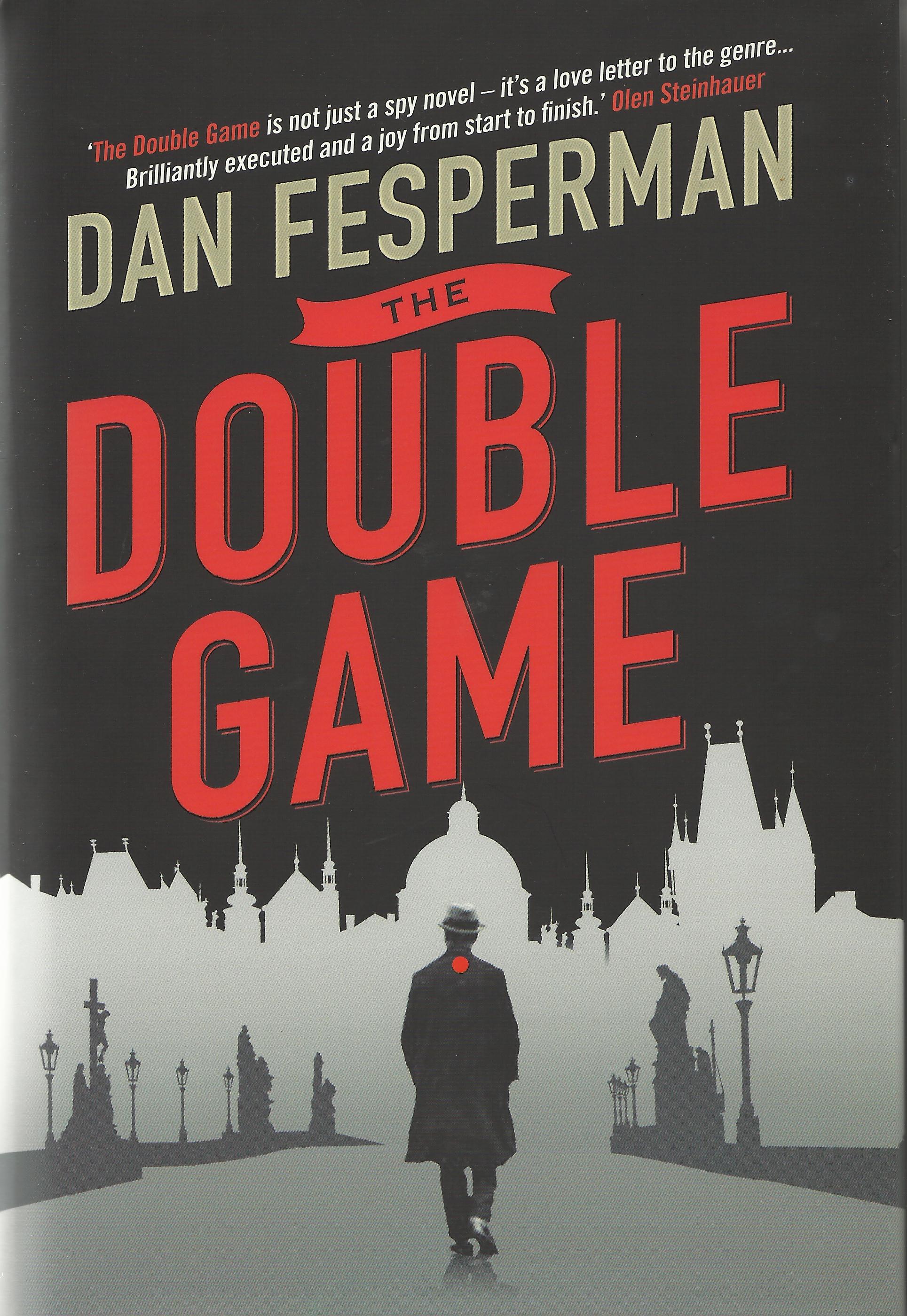
I was delighted
to discover that I was familiar with virtually all the authors of spy stories
referenced by Dan Fesperman – from James Fenimore Cooper and William Le Queux
to Donald Hamilton and Ted Allbeury – though I admit to being a little vague on
the works of Edwin Lemaster. There was one name, however, which was completely
new to me, that of William Hood, a former OSS and CIA operative turned
novelist.
As far as I could
discover, the three or four novels penned by Hood were never published in
Britain, but thanks to the jolly old interweb, I have acquired a copy of his
1986 novel Spy Wednesday and found it a truly excellent depiction of Cold
War spy craft set in Vienna and Budapest. The most amazing thing about it,
though, is the fact that I had not come across it before now, as it really is
up there in the same class as Le Carre, Robert Littell and Charles McCarry.
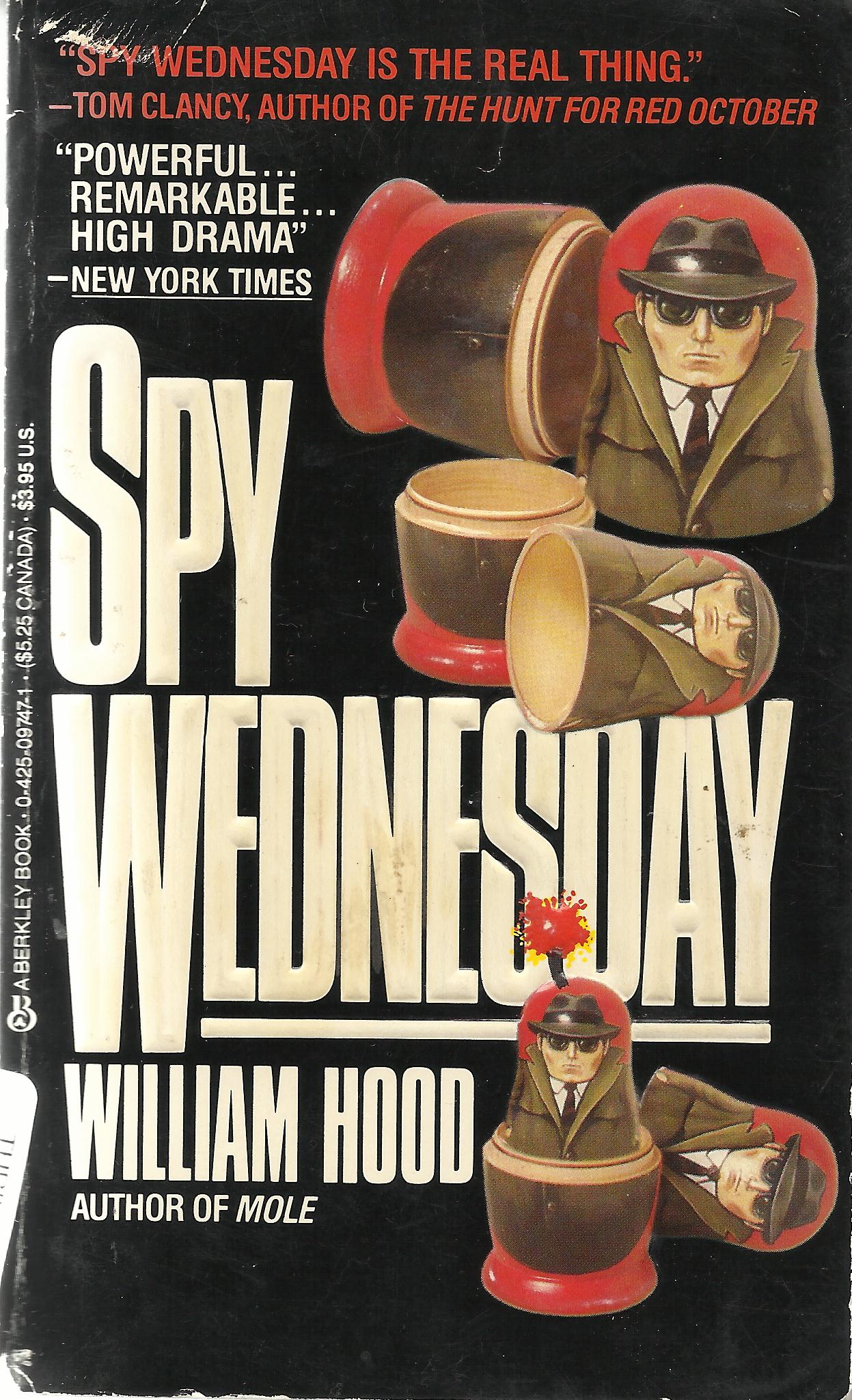
So I owe a big
‘thank you’ to the Thrift Bookstore in Atlanta, Georgia, and, of course, to Dan
Fesperman.
Halo Not Slipping
There is no sign
that Simon Templar’s famous halo is slipping, even after 85 (?) years of
fictional buccaneering, righting wrongs, rescuing damsels in distress and
robbing the rich to give to the …er…slightly less rich. If, that is, a reissue
of theentire ‘Saint’ canon by Leslie Charteris in splendid new covers by
Mulholland Books is anything to go by.
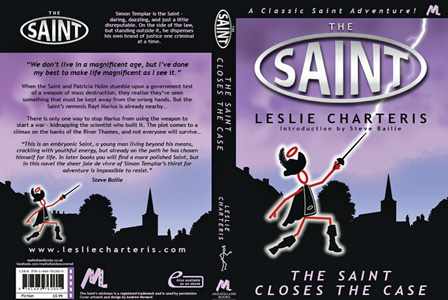
The first
appearance of The Saint in print was, I believe, in 1928 and there were at
least three film versions of the character in Hollywood’s black-and-white
heyday. I have to admit that my first encounter with Simon Templar was not
through the novels or short stories, but via the highly successful television
series starring Sir Roger Moore which began in 1962. After Roger doffed his
saintly halo and took up drinking vodka martinis as James Bond, the television
series was reprised (less successfully) with Ian Ogilvy in the lead role. A further film version starring Val
Kilmer followed in 1997, about which the least said the better.
However, I can
offer more treats for fans of The Saint other than news of the splendid
reissues which Mulholland will begin to roll out next month. Just before
Christmas, principal photography started on the pilot for a new television
version, starring Adam Rayner and Eliza Dushku.

The pilot film
has, it seems, been at least eight years in the making which does not surprise
me in the slightest for I am well aware that the creative development process
in television, rather like the mills of God, grinds exceeding slow. At one
point I understand that James Purefoy was earmarked for the role, which would
have been an excellent choice in my never humble opinion. However, I take great
pleasure from the fact that both Sir Roger Moore and Ian Ogilvy make cameo
appearances in the new version and my spies tell me that both give excellent
value.
Black Dahlia Remembered
You could
probably be forgiven for not knowing that Tuesday 15th January was
the 66th anniversary of the discovery of the brutally murdered
corpse of Elizabeth Short in Los Angeles, an event which entered both crime
fact and crime fiction legend as The Black Dahlia case.
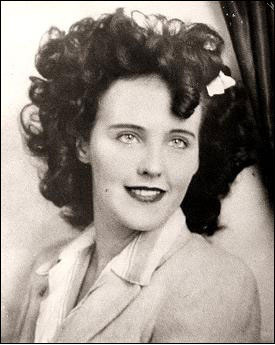
Genuine students
of crime writing (and James Ellroy in particular) will know of what I speak and
will be interested to hear that to mark the event there will be an evening
devoted to ‘The Black Dahlia Murder’ on January 15th run by Queen
Mary college of the University of London, to be held in St Bartholomew’s
Pathology Museum near London’s Smithfield Market.
The event
features a talk by Steve Powell, of Liverpool University, who runs ‘The
Venetian Vase’ website (http://venetianvase.co.uk/)
, entitled I never knew her in life:
Cultural Depictions of the Black Dahlia case and the conference booking fee
includes a ‘Black Dahlia’ cocktail. I am not sure what such a cocktail
contains, but I suspect more than one may be needed as the second talk that
evening is by Professor Peter Vanezis and is entitled The Investigation of Dismembered Remains. Should anyone think I
exaggerate, I would remind them of the location of this particular conference. St Bart’s Pathology Museum is not, I
fear, the name of a well-known public house but exactly what it says it is.
New Year’s Resolve
Despite severe
provocation from the publishing industry, I am resolved to refrain from
sarcastic comments about the incredible number of thrillers which use the
supposedly enigmatic “walking away man” as a cover design, leading to a
homogeneity which does nothing but injustice to the uniqueness and delicacy of
the novel it purports to represent. And I really believe that.
My other New
Year’s Resolution is to tell fewer lies.
In the meantime,
here are five of my favourites from 2012.

There are no
prizes for guessing from which bestselling thrillers these are taken, for the
(genuine) reason that I simply cannot remember, such was the impact of them.
Happy New 2013 To
All,
(Especially
Aztecs),
The Ripster.
|